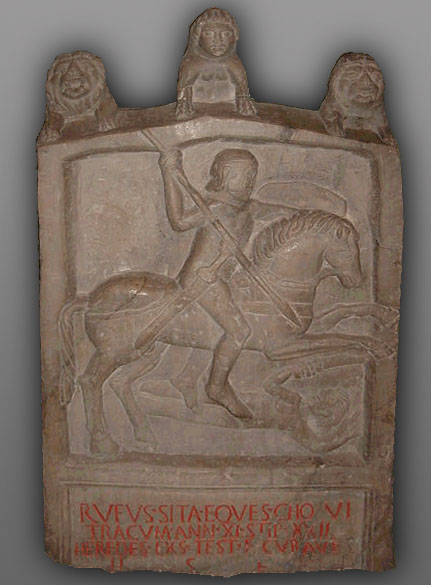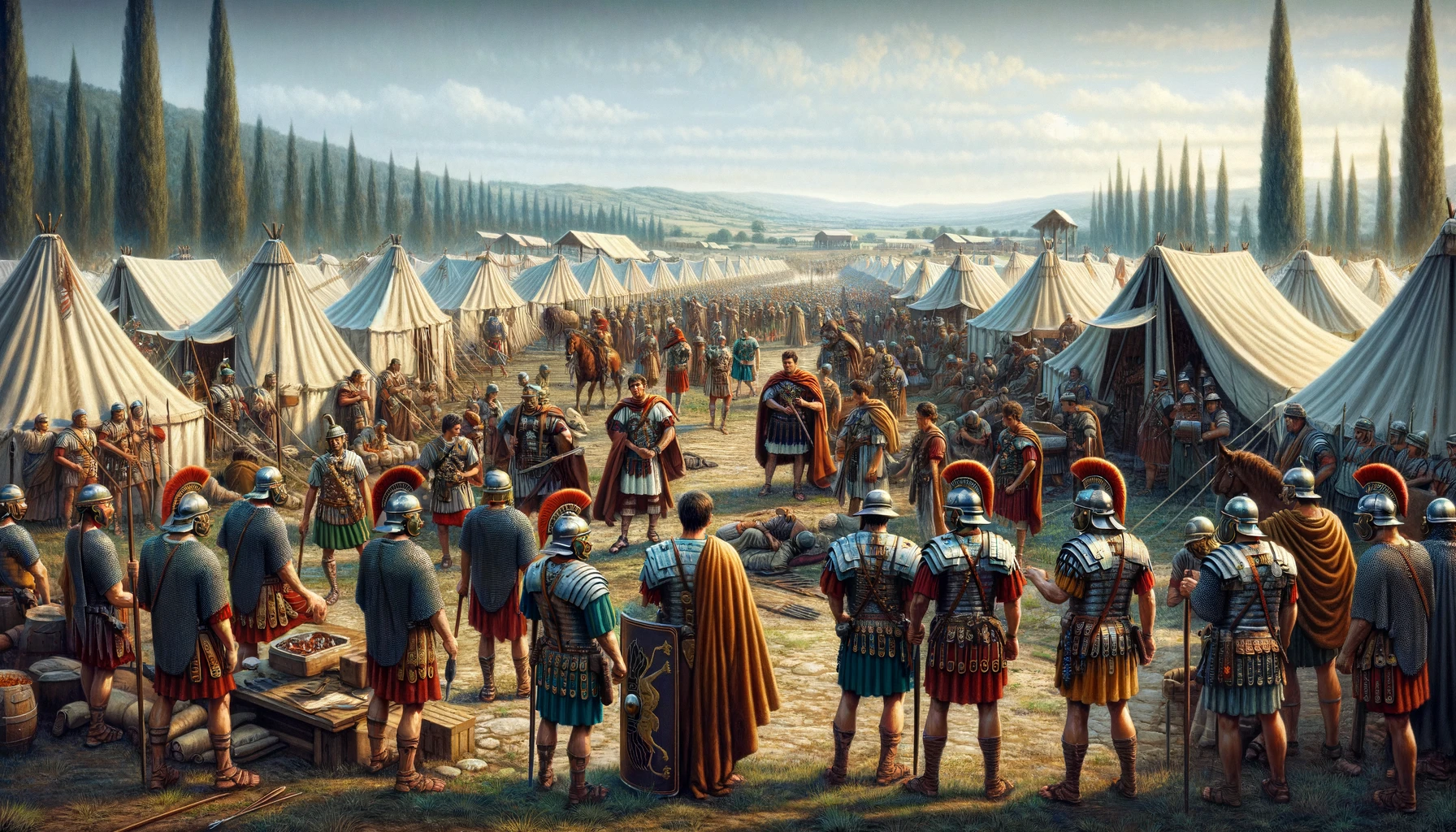The Cohors VI Thracum [veterana] [equitata] ( German 6th cohort of the Thracians [the old servants] [partially mounted] ) was a Roman auxiliary unit . It is documented by military diplomas , inscriptions and brick stamps.
Name parts of Cohors Sextae Thracum
- Thracum: The soldiers of the cohort were recruited from the Thracian people in the territory of the Roman province of Thrace when the unit was set up.
- veterana: the veteran. The addition occurs in an inscription.
- equitata: partially mounted. The unit was a mixed formation of infantry and cavalry.
- Since there is no evidence of the suffix milliaria (1000 men), the unit was a cohors quingenaria equitata . The target strength of the cohort was 600 men (480 infantry and 120 cavalry), consisting of 6 centurions of infantry, each with 80 men, and 4 turmae cavalry, each with 30 cavalry.
History of Cohors Sextae Thracum
The cohort was based in the provinces of Britannia , Germania , Pannonia , Moesia superior , Dacia and Dacia Porolissensis (in that order). She is listed on military diplomas for the years 80 to 165 AD.
The unit was stationed in Britain in the 1st century AD. It was probably withdrawn from Britain before 69 and transferred to the province of Germania . The first evidence of unity in Germania is based on diplomas dated 80. The diplomas list the cohort as part of the troops (see Roman forces in Germania ) that were stationed in the province.
Between 80 and 84 the cohort was transferred to the province of Pannonia . The first evidence of unity in Pannonia comes from a diploma dated 84. The diploma lists the cohort as part of the troops (see Roman forces in Pannonia ) that were stationed in the province. Another diploma, dated 85, occupies the unit in the same province.
Between 85 and 96 the cohort was moved to the province of Moesia superior . The first evidence of unity in Moesia superior is based on a diploma dated 96. The diploma lists the cohort as part of the troops (see Roman forces at Moesia ) that were stationed in the province. Other diplomas dated 100 through 103/106 occupy the unit in the same province.
The cohort probably took part in Trajan’s Dacian wars and was then stationed in the new province of Dacia . The first evidence of unity in Dacia comes from a diploma dated 110. The diploma lists the cohort as part of the troops (see Roman forces in Dacia ) that were stationed in the province. Further diplomas dated 114 to 165 occupy the unit in the same province (or from 130/131 in Dacia Porolissensis ).
The last evidence of the cohort is based on bricks stamped CO VI T , which are dated to 201/270.
Locations of Cohors Sextae Thracum
- Gloucester (RIB 121 tombstone).
- Porolissum (Moigrad): Bricks stamped CO VI T were found here.
- Largiana ( Românaşi )
- Certiae (Romita): Bricks [8] stamped COH VI TH and COHOR VI TRACU were found here.
- Bricks [9] stamped COH VI TR have also been found in Magyaregregy (Province of Pannonia ).
Evidence for the presence of Cohors Sextae Thracum in Britain
This cohort, recruited from among the various tribes of the Roman province of Thrace, is attested in Britain on a single undated tombstone of a horseman from the unit found at Gloucester.
RIB 121 - Funerary inscription for Rufus Sita
Rufus Sita, trooper of the Sixth Cohort of Thracians, aged 40, of 22 years’ service, lies buried here. His heirs had this erected according to the terms of his will.
TRACVM ANN XL STIP XXII
HEREDES EXS TEST F CVRAVE
H S E
Sita: Cassius Dio li, 23 mentions Sitas as a king in Thrace in 29 b.c.For a subsequent mention of this cohort see RIB 2411.152-8.

